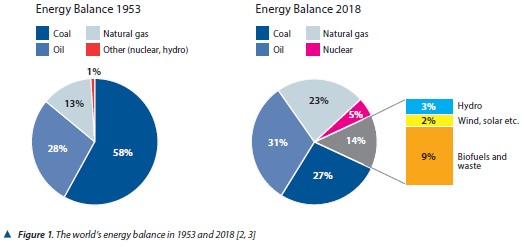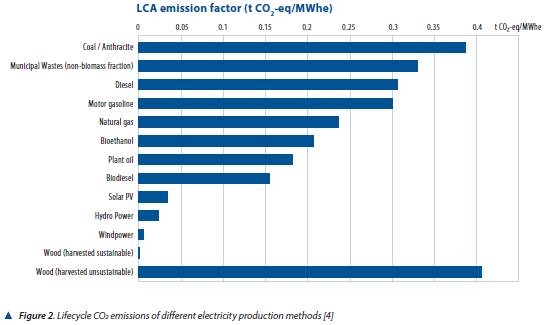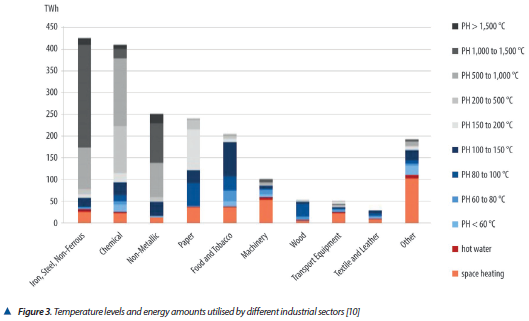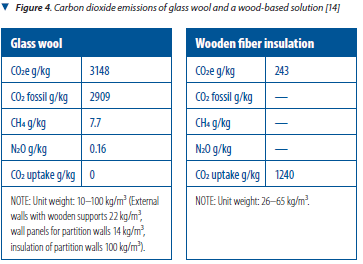09/08/2021
Looking for a silver bullet, or, how to make the world carbon neutral by 2050?
The European Union, the United Kingdom, Japan, South Korea and over 110 other countries have committed to becoming carbon neutral by 2050 and China has set the same goal for 2060 [1]. The United States will, according to the recently published goal, cut their emission from the 2005 level by 50–52 per cent by 2030. How realistic are these goals and which measures are being taken to achieve them?
What did the world of energy look like in 1953 and 2018?
The conversation about our society’s efforts towards a carbon neutral future has accelerated and different countries have published their goals for this transition. Roadmaps and lists of measures on how to concretely implement the change are currently being drafted. When defining the measures, it is important to examine both the change’s realistic schedule and impact in relation to the goal. One way to see the future is to base the scenarios partly on history and the current situation.
When we examine energy production in the 1950s (Figure 1) we can see that it was based almost entirely on fossil fuels. Correspondingly, when we examine the numbers from 2018, we notice that in 65 years, carbon’s share of the world’s energy production has decreased by almost a half, but on the other hand, oil’s share has remained almost the same. Correspondingly, the share of natural gas has significantly increased while renewable forms of energy have increased to be one seventh of overall energy.
The speed of the energy transition must be accelerated if we want to achieve an almost carbon-neutral world within the next 30 years. When we examine the reasons for the slow change, at least two factors become noticeable; energy’s cheap historical price and climate awareness only becoming widespread in the last decade. The low price of fossil energy has kept it in a central role in energy production while also slowing down the implementation of new technology. Wind- and solar-based energy production has only recently started to grow significantly, boosted by both public policy instruments and the development of technology. Policy instruments will continue to have a key role in the energy transition in future. On the other hand, climate awareness has improved in the 2000s. Its most notable messengers include Al Gore with his documentary An Inconvenient Truth and Greta Thunberg with her campaign Skolstrejk för kilmatet. Gradually, a growing number of countries are committing to climate goals.
How to keep moving forward, what are concrete measures for the next thirty years? We have numerous methods, and all the technology needed for the change is already available to us. The measures needed can be roughly divided into the following main categories:
1. Moving on from fossil fuels
2.Energy efficiency for different areas of society
3.Carbon dioxide absorption and utilisation as long-term tools
Next, we will examine these solutions in more detail.

Moving on from fossil fuels
As presented above, it is obvious that we must give fossil fuels up in a controlled manner. In practice this means that there is no individual energy solution available that could replace all fossil-based energy sources. The overall solution must be formed from several different operators and technologies. When we compare different measures, we must take the entire lifecycle into account in order to ensure that the results are comparable. Figure 2 presents producing electricity in different ways and examines the CO2 emissions produced throughout the lifecycle (LCA).
From the figure we can see that production forms based on sunlight, wind and water distinguish themselves. A noteworthy matter is the surprisingly large environmental impact of biofuels, when the entire lifecycle is considered in the examination. Another noteworthy matter in the figure is the significant range of wood (the wood has been calculated a higher value in situations in which the harvesting has not been performed sustainably), which is likely to set preconditions for growing and utilising forests. Either way, it is clear that different forms of production will also be needed in the future and their sustainability must be developed.
Lately, the public conversation has revolved around the EU’s taxonomy proposal in which the objective is to develop a system of classification for environmentally friendly investments. The classification is used to promote the implementation of sustainable investments and the European Green Deal by providing companies, investors and political decision-makers with appropriate definitions so that they can focus investments on sustainable solutions. This system will probably affect the financing available to energy production investments and guide them towards more sustainable forms of production [5].
One of the tools for the journey towards clean energy production is sector integration. At its best, it is a cost-efficient way of utilising the characteristics (especially flexibility) of different sectors so that the share of renewable energy used in the system can be maximised while also ensuring the security of supply [6]. Advancing electrification is also seen as a tool for achieving carbon neutrality. Increasing the share of renewable energy enables companies to move on from fossil fuels, but on the other hand, it will create variation in our energy system. This in turn will also create new business opportunities for different operators. In practice, the advancing electrification can be divided into the three following areas:
- Direct electrification by, for example, producing heat with electric boilers or replacing a process device that uses natural gas with one that uses electricity
- Electrification with heat pumps, which enables utilisation of lost heat and production of added value with a smaller amount of electric power
- Hydrogen production with renewable energy ad utilising it both directly and in the manufacturing of synfuel

Energy efficiency measures for different areas of society
Energy efficiency is not a new thing; it has been discussed since the energy crisis of the 1970s, first as avoiding the wasting of energy, then as saving energy, and in the last decade it has come to mean energy efficiency. In future, it will be seen as one of the most cost-effective solutions for combatting climate change. It has been estimated that in Europe it could be possible to save 150–220 Twh a year by investing in energy-efficient solutions and, for example, new CHP technology [7]. The EU has set the goal of increasing energy efficiency by 32.5% by 2030 [8]. A noteworthy aspect of improving energy efficiency is that technologies that improve industry’s energy efficiency are mainly well known and there is no need to develop new technology in a major way. It is essential to implement new technology and expand the concepts that have been proved to be good and economical over the borders of industrial sectors [9].
One concrete measure for promoting energy efficiency is to use heat pumps in industrial sectors. When we examine different industrial sectors’ heat use and temperature levels in Europe, we see that the utilisation opportunities for heat pumps vary from sector to sector (Figure 3). It has been estimated that the technical potential for industrial heat pumps could be (in the EU 28 area) as much as 1,717 PJ (477 Twh), of which about 270 (75 Twh) could currently be realised as financial potential [10].
In future, thanks to the development of the heat pump technology, increasingly higher temperature levels can be reached, which will create new utilisation opportunities for them. The objective is to utilise heat pumps increasingly deeper in the processes and in increasingly complicated application sites, which will give utilising them together with different stored heats a significant role. This will promote the electrification mentioned above as part of energy production.
Carbon absorption could help us reach carbon negativity
Carbon negativity refers to a product’s, company’s, municipality’s or country’s net effect that removes carbon from the atmosphere, which then prevents or slows down climate change. In practice this means using a method to absorb more carbon than gets released into the atmosphere. The methods for implementing this in practice are being developed and examples of the technologies are the following [11, 12]:
- The CCS technology, in which carbon dioxide created from incineration is collected and stored
in the earth’s crust. If it is about collecting from incineration of biomass, the term is BECCS technology
- The CCU technology, or, collection and utilisation of carbon dioxide. This technology utilises the ‘power to fuel’ method, in which carbon-neutral fuels, such as synthetic gas, methanol, or Fischer-Tropsch products, are produced
- Collecting carbon dioxide directly from the air and utilising it in the CCS and CCU solitions
- Afforestation and taking care of existing carbon sinks are tools used in absorption of carbon. Sustaina-ble forestry is an essential part of this
- Absorbing carbon with products, such as biochar which can be used as a soil conditioner, for example.
Carbon absorption will become a major tool after 2050, but the first commercially profitable projects will likely be seen as soon as in the 2030s. Carbon dioxide may not be collected in the utilisation of first-phase P2X technologies, but these projects will pave they way for the development of technology for full-scale CCU. Overall, the developing hydrogen economy will be connected to the absorption and utilisation of carbon in the future. Hydrogen technology will also be connected to a wide variety of technologies and application sites and it will have a significant role in both the electrification of the society and the replacing of fossil fuels.

Energy transition is an opportunity, especially for suppliers of clean energy
Carbon-neutrality goals also create entirely new business opportunities for technology suppliers, energy companies and industry. The carbon handprint enables new exports opportunities for suppliers of clean technology. The carbon handprint refers to how much one’s own actions help others decrease their emissions. In this way, a pioneering operator can both grown its carbon handprint and benefit when selling its solutions to others [13].
A good example of the carbon handprint and carbon absorption is replacing glass wool with a wood-based solution. The provider of a wood-based solution can affect its customer’s carbon footprint and, at the same time, the product absorbs carbon for a long time (Figure 4).
For energy companies, the energy transition brings with it the challenge of adjusting the company’s main business, but it can also be an opportunity to reform and develop the operations. Many energy companies have boldly started to offer different services, such as recharging points for electric cars, district cooling, solutions of distributed energy, circular economy services, etc. In the future, it will also be possible to provide customers with the same amount of energy, even with smaller investments, which will in part lessen the risks related to core business.
Different industrial sectors are at different stages in their carbon-neutrality efforts, but for industrial companies that operate very efficiently and environmentally friendly the carbon-neutrality targets can become a competitive edge in the future. However, investments in low-carbon energy production, the circular economy and energy efficiency will still be needed.

Summary
As we can see, there is no individual silver bullet that could be used to combat climate change and ensure a carbon-neutral future. Many different, strongly interconnected solutions of different levels are needed. Therefore, it becomes important that each operator chooses the most impactful and efficient measures that best suit its operations. It is also essential to change the way people think so that the energy transition can be seen as an opportunity in which the anticipatory and active operators can be the winners of the transition time. Cooperation between different operators will also be central so that resources and competences can be efficiently focused for the common cause.

